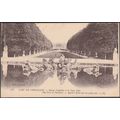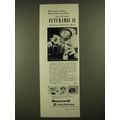Isle of Staffa from South - Iona Community postcard c.1970s
- Condition : Used
- Dispatch : 2 Days
- Brand : None
- ID# : 99587544
- Quantity : 1 item
- Views : 275
- Location : United Kingdom

- Seller : justthebook (+1704)
- Barcode : None
- Start : Sun 31 Mar 2013 05:12:27 (EDT)
- Close : Run Until Sold
- Remain : Run Until Sold
Checks/Cheques
 for 1 item(s) edit
for 1 item(s) edit
Shipping Calculator
More Listings from This Seller view all
Seller's Description
- Postcard
- Picture / Image: The Isle of Staffa from the South
- Publisher: The Iona Community Series
- Postally used: no
- Stamp: n/a
- Postmark(s): n/a
- Sent to: n/a
- Notes / condition:
Please ask if you need any other information and I will do the best I can to answer.
------------------------------------------------
Postage & Packing:
UK (incl. IOM, CI & BFPO): 99p
Europe: £1.60
Rest of world (inc. USA etc): £2.75
No additional charges for more than one postcard. You can buy as many postcards from me as you like and you will just pay the fee above once. (If buying postcards with other things such as books, please contact or wait for invoice before paying).
Payment Methods:
UK - PayPal, Cheque (from UK bank) or postal order
Outside UK: PayPal ONLY (unless otherwise stated) please. NO non-UK currency checks or money orders (sorry).
NOTE: All postcards are sent in brand new stiffened envelopes which I have bought for the task. These are specially made to protect postcards and you may be able to re-use them. In addition there are other costs to sending so the above charge is not just for the stamp!
I will give a full refund if you are not fully satisfied with the postcard.
----------------------------------------------
Text from the free encyclopedia WIKIPEDIA may appear below to give a little background information (internal links may not work) :
*************
Staffa (Scottish Gaelic: Stafa,[3][4] pronounced [s?t?afa]) from the Old Norse for stave or pillar island, is an island of the Inner Hebrides in Argyll and Bute, Scotland. The Vikings gave it this name as its columnar basalt reminded them of their houses, which were built from vertically placed tree-logs.[5]
Staffa lies about 10 kilometres (6.2 mi) west of the Isle of Mull. The area is 33 hectares (0.13 sq mi)[6] and the highest point is 42 metres (138 ft) above sea level.
The island came to prominence in the late 18th century after a visit by Sir Joseph Banks. He and his fellow travellers extolled the natural beauty of the basalt columns in general and of the island's main sea cavern which Banks renamed 'Fingal's Cave'. Their visit was followed by that of many other prominent personalities throughout the next two centuries, including Queen Victoria and Felix Mendelssohn. The latter's Hebrides Overture brought further fame to the island, which was by then uninhabited. It is now in the care of the National Trust for Scotland.[7]
In pre-historic times Staffa was covered by the ice sheets which spread from Scotland out into the Atlantic Ocean beyond the Outer Hebrides. After the last retreat of the ice around 20,000 years ago, sea levels were up to 125 metres (410 ft) lower than at present. Although the isostatic rise of land makes estimating post-glacial coastlines a complex task, c. 14,000 BP it is likely that Staffa was part of a larger island, just off the coast of mainland Scotland, which at that time would have included what is now the Isle of Mull, Iona and the Treshnish Isles.[8]
Steadily rising sea levels since that time then further isolated this little island, which is entirely of volcanic origin. It consists of a basement of tuff, underneath colonnades of a black fine-grained Tertiary basalt, overlying which is a third layer of basaltic lava lacking a crystalline structure. By contrast, slow cooling of the second layer of basalt resulted in an extraordinary pattern of predominantly hexagonal columns which form the faces and walls of the principal caves.[1] The lava contracted towards each of a series of equally spaced centres as it cooled and solidified into prismatic columns, a process known as columnar jointing. The columns typically have three to eight sides, six being most common. The columns are also divided horizontally by cross joints.[9] Similar formations are found at the Giant's Causeway in Northern Ireland, on the island of Ulva and Ardmeanach on the Isle of Mull.[7] Grooves in the roof of MacKinnon's cave indicate either a pyroclastic flow or a series of eroded ash falls in the rock above the columnar basalt.[10] The 'Staffa Group' is the name given to the series of olivine tholeiite basalts found in the vicinity of Mull which erupted 55–58 million years ago.[11]
Staffa lies about 10 kilometres (6 mi) west of Mull, and 9 km northeast of Iona. It is longitudinally oriented north-south, and is a kilometre long by about half a kilometre wide. The circumference is about 3.8 km in extent. In the northeast the isle shelves to a shore, but otherwise the coast is rugged and much indented, numerous caves having been carved out by rain, streams and sea. There is enough grass to feed a few cattle, and the island has a spring.
On the east coast are Goat Cave and Clamshell Cave. The latter is 10 m high, about 6 m wide at the entrance, some 45 m long, and on one side of it the ridges of basalt stand out like the ribs of a ship. Near this cave is the pyramidal rock islet of Am Buachaille ('The Herdsman'), a pile of basalt columns fully seen only at low tide. Other outlying rocks include Eilean Dubh to the north-west and a series of skerries stretching for half a kilometre to the south-west. On the southwest shore are Boat Cave and Mackinnon’s Cave (named after a 15th-century abbot of Iona), which has a tunnel connecting it to Cormorant Cave. These caves lie to the south-west and can be accessed from the bay of Port an Fhasgaidh at low tide. In 1945 a mine exploded near Boat Cave causing damage to the cliff face which is still visible.[1] At 107 metres, Mackinnon's Cave is the 79th longest sea cave in the world.[12]
Staffa's most famous feature is Fingal's Cave, a large sea cave located near the southern tip of the island some 20 m high and 75 m long formed in cliffs of hexagonal basalt columns. This cliff-face is called the Colonnade or The Great Face and it was these cliffs and its caves that inspired Felix Mendelssohn's Die Hebriden (English: Hebrides Overture opus 26),[13] which was premiered in London in 1832.[14] The original gaelic name for Fingal's Cave is An Uamh Bhin – ""the melodious cave"" – but it was subsequently renamed after the 3rd-century Irish warrior Fionn MacCool.[1][15][16] Mendelssohn was nonetheless inspired by the sound of the waves in the cave and waxed lyrical about his visit, claiming that he arrived in Scotland ""with a rake for folk-songs, an ear for the lovely, fragrant countryside, and a heart for the bare legs of the natives.""[17]
Staffa is part of the Loch Na Keal National Scenic Area, one of 40 in Scotland.[18]
type=printed postcards
theme=topographical: british
sub-theme=scotland
county/ country=islands
number of items=single
period=1945 - present
postage condition=unposted
Listing Information
| Listing Type | Gallery Listing |
| Listing ID# | 99587544 |
| Start Time | Sun 31 Mar 2013 05:12:27 (EDT) |
| Close Time | Run Until Sold |
| Starting Bid | Fixed Price (no bidding) |
| Item Condition | Used |
| Bids | 0 |
| Views | 275 |
| Dispatch Time | 2 Days |
| Quantity | 1 |
| Location | United Kingdom |
| Auto Extend | No |





















